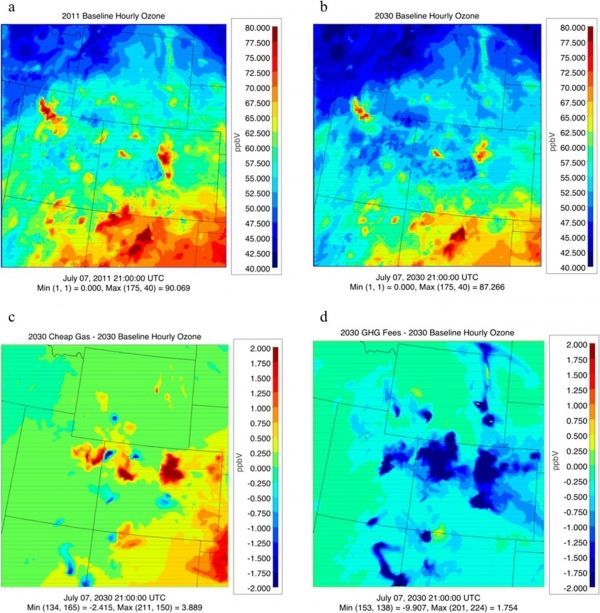Research by Drexel University and the University of Colorado at Boulder suggests that imposing fees on energy producers that emit greenhouse gas could improve the health and financial well-being of the Rocky Mountain region.
Using sophisticated modeling programs that can project atmospheric concentrations of ozone, a ground-level pollutant, by considering factors like current emissions from power plants, weather trends and changes in energy production, the team compared the effects of four scenarios on the Rocky Mountain region of 2030. Their findings were recently published in the journal Environmental Science & Technology.
Looking closely at coal, oil and natural gas production regions in Colorado, Utah, Wyoming and northern New Mexico — a region in the midst of planning its energy production transition over the next several decades — the team proposed four energy production policy scenarios, any of which could very well be in effect by 2030.
“Opportunities to produce power through newly accessible oil and gas as well as renewable resources have increased rapidly in the Rocky Mountain region, which has a growing population,” said Shannon Capps, PhD, an assistant professor in Drexel’s College of Engineering who helped conduct the research. “The region needs more electricity and has choices about how to produce it. This analysis helps people understand the implications of different choices, some imbedded in infrastructure that will shape climate and air quality in lasting ways.”
Read more at Drexel University
Image: (a) Hourly ozone on July 7, 2011 at 3 pm MST. (b) Hourly ozone on July 7, 2030 at 3 pm MST. (c) Change in hourly ozone from the 2030 baseline scenario to the cheap gas scenario. (d) Change in hourly ozone from the 2030 baseline scenario to the GHG fees scenario. (Credit: Drexel University)


